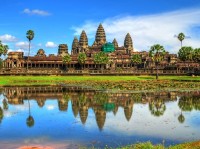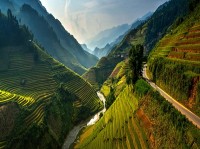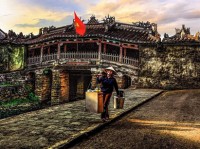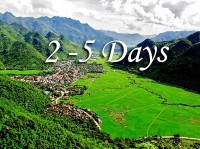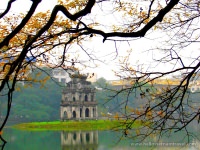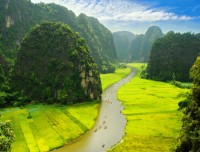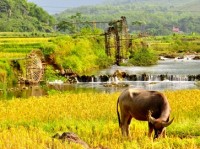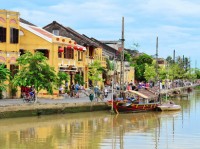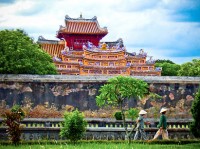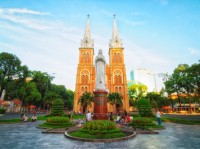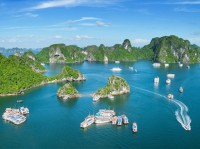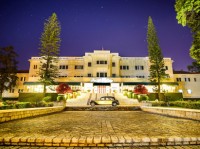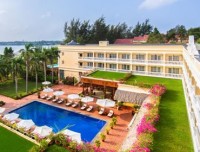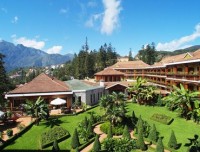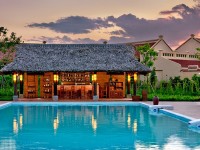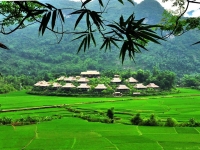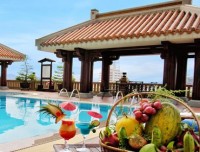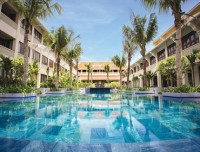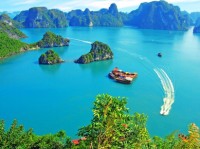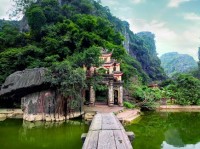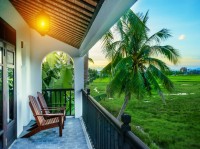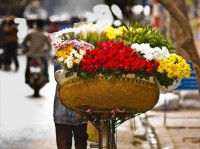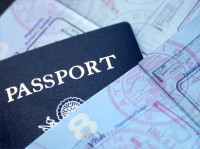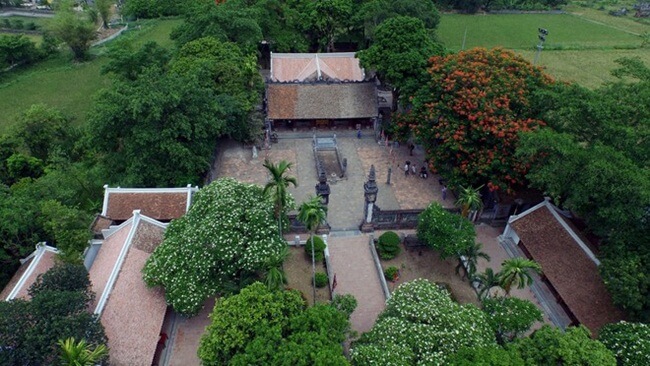Hoa Lu ancient capital is a must – visit destination in Ninh Binh province. This old city bless with the magnificent nature and a glorious history. Existing in the 10th and 11th century, the old city vestige contains a variety of architectural works in which Dinh and Le temples are the notable sites.
An Overall View to Hoa Lu Ancient Capital
In 968, Dinh Tien Hoang defeated 12 rebel lords unifying the country under the name of Dai Co Viet. Hoa Lu became the first capital of Vietnam ruling by the Dinh and Le dynasties. Situated in the flat valley in Ninh Binh province, the old capital includes a great number of temples, pagodas, monuments and pavilions caring the distinctive features of the different ancient kingdoms. The beauty of the citadel was created by the majestic look of the surrounding limestone mountain and the elegance of Hoang Long river running through it. The ancient city has an area of 300 hectares in which 150 hectares were used to build the Royal Court. However, due to time and severe weather conditions, the ancient city now remains only few vestiges.
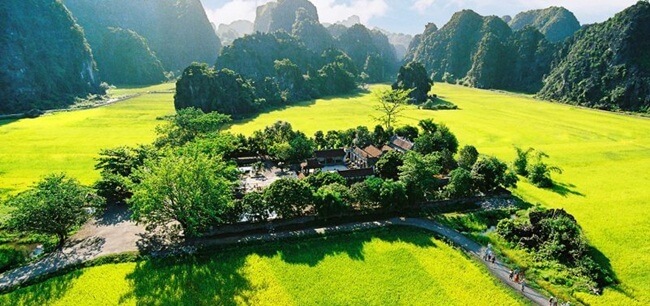
A Panorama of Hoa Lu Citadel
Dinh Temple - Where Legend Lives on
Located in the Hoa Lu ancient capital complex, Dinh temple was built to honor the first emperor of Vietnam who reunified the country from the chaos - Dinh Tien Hoang. Constructed in the 17th century, the temple carried the exclusive architectural style of the Dinh dynasty. The temple is said to be in the perfect location following the feng shui with mountain covers the back and river runs in the front. The entrance called Ngo Mon decorating by the stone statues of Nghe (a sacred ancient animal of Vietnam) sitting on the top of the pillars. Lying in the yard is the blue stone king - bed decorating with the dragon pattern. Either side stands numerous statues and flags symbolizing the army. Inside are the worship places of not only Emperor Dinh but also his son and parents as well as the 4 most important mandarins of the empire.
Dinh temple from the above
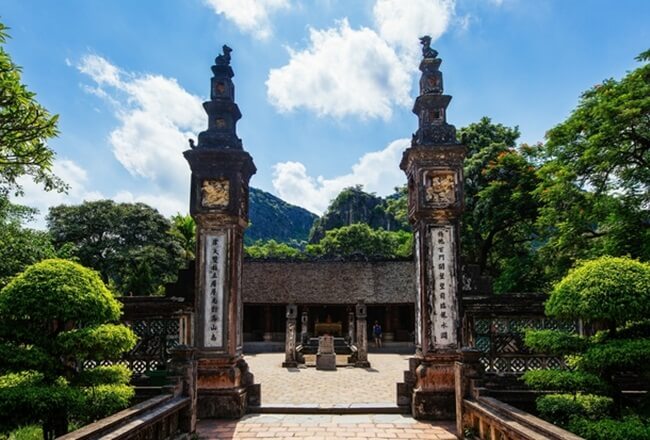
The entrance of Dinh temple
Le Temple - The Wood - Engraving Masterpiece of Le Dynasty
500 meters from Dinh temple situated the shrine of Emperor Le Dai Hanh. The most significant characteristics of Le temple is the sophisticated wood – engraving structures of the 17th century. Outside the temple place many magnificent stone and wood decorations representing for the power and royalty such as tiger, phoenix, and elephant. The temple is smaller in scale in comparison with Dinh temple but has 3 chambers as well. The middle one is to worship emperor Le Dai Hanh and the other houses are to revere his Empress Duong Van Nga and the major mandarins who help him defeat the rebels and invaders. The ruined of the Imperial city background and some immemorial ceramics were discovered in this relic. Now they are all displayed in the room on the left of the temple.
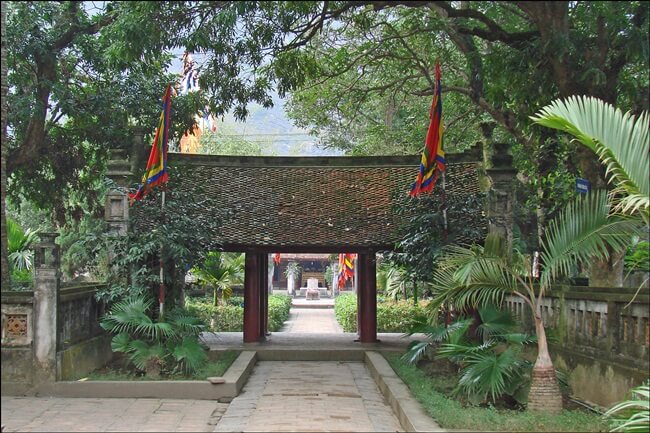
Outside Le Temple

Statue of Le Emperor
Truong Yen Festival – A Tribute for the Great Kings
Coming to the ancient capital, visitors can have a chance to join in the biggest festival of Ninh Binh province – Truong Yen festival. It is celebrated in order to appreciate the contribution of the Dinh and Le Emperors in reunifying the country. Truong Yen Festival is annually held on the March of the lunar year from the 9th to the 11th which the main festival is celebrated on the 10th . The remarkable activities are Chau Van and Tru singings (traditional music of Vietnam), the replay of the battle of buffalo boy Dinh Bo Linh before rising to become the King and the water taken ceremony from Hoang Long river to the Kings’ temples. Moreover, tourists can take part in many interesting folk games such as wrestling, boat racing, human chess, etc.
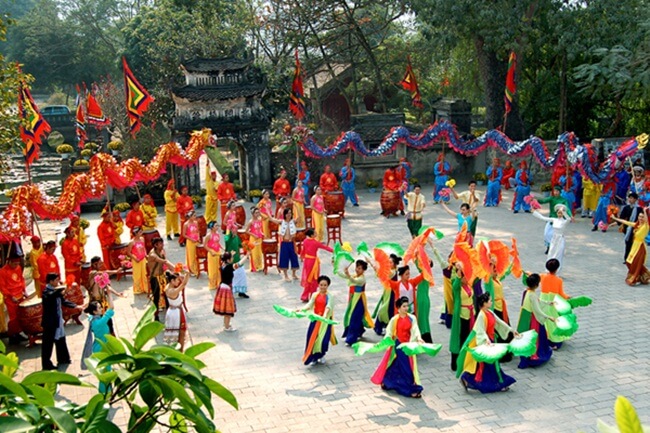
Dancing and singing activities in the backyard of Dinh temple
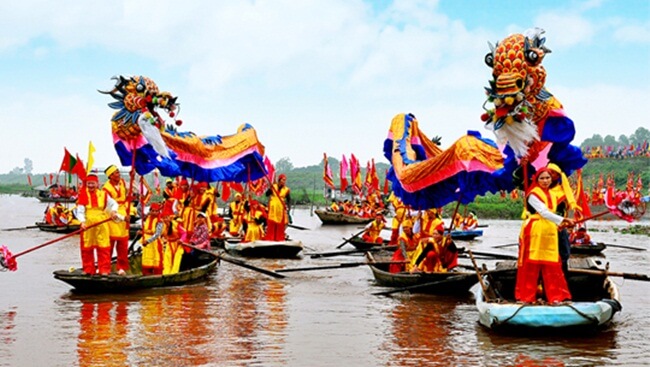
Dragon dance on the river
♦ Consider one of our Ninh Binh Tours to discovery this ancient capital now!


